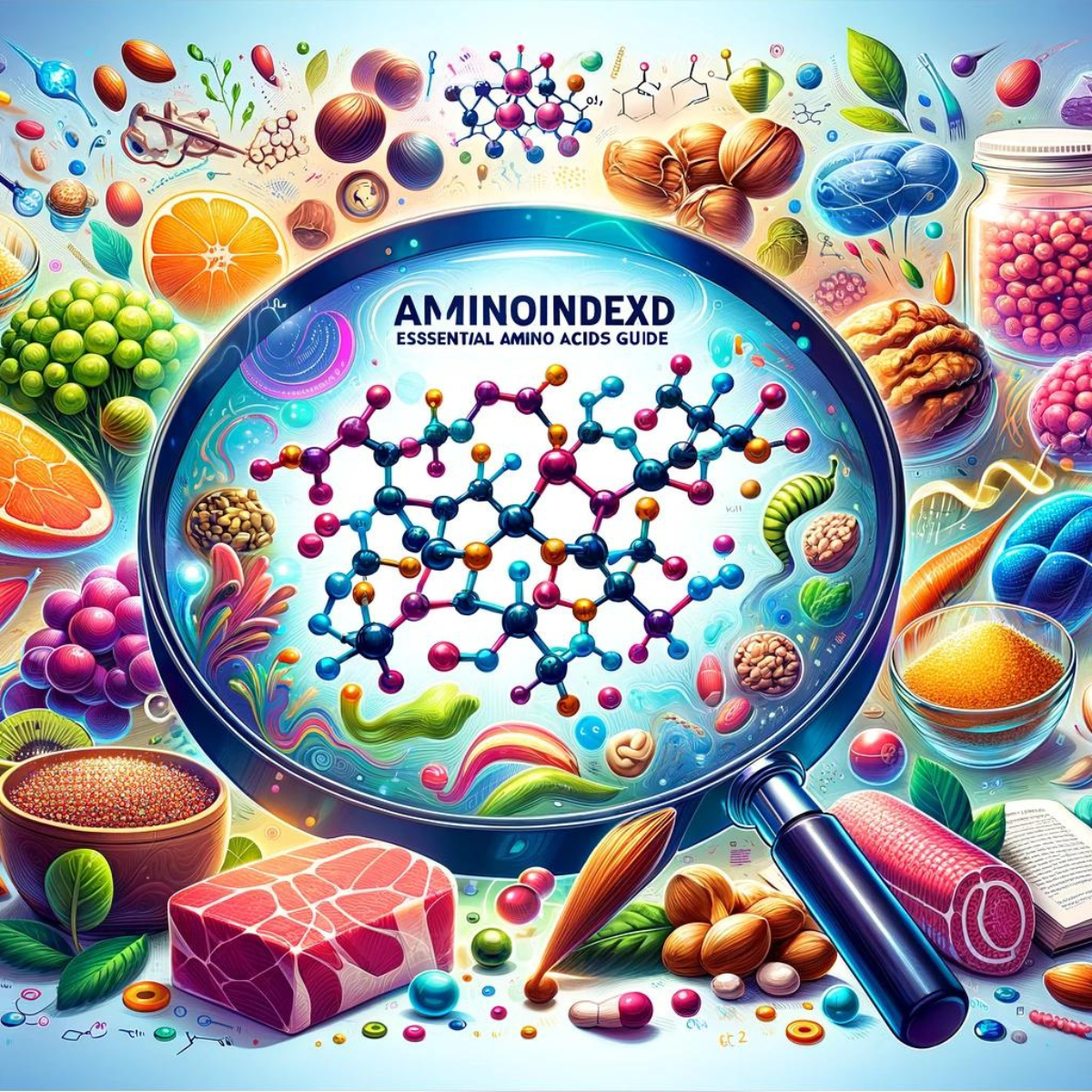
Table of Contents
- Introduction: The Skin is the Largest Organ
- Sebum and Its Role in Skin Health
- Understanding Acne
- The Role of Pantothenic Acid (Vitamin B5)
- The Role of Carnitine
- Conclusion: Supporting Clear Skin
- Comparative Overview of Acne Treatments
- Lifestyle and Dietary Factors in Acne
- The Role of the Skin and Gut Microbiome
- Practical Use of Nutraceuticals
- Environmental and External Influences on Skin
- Research Gaps and Future Directions
- Conclusion
- Related Post
- Disclaimer
Introduction:
Clear skin is more than just a confidence booster—it’s often a reflection of overall health. Yet, for millions of people, acne remains a persistent and frustrating problem. Whether it’s the occasional breakout or chronic acne, navigating treatments and skincare routines can feel overwhelming.
The secret to clearer skin may lie not just in external treatments but in nourishing the body from within. Recent discoveries highlight the powerful role of two key nutrients—pantothenic acid (vitamin B5) and carnitine—in supporting skin health. These nutrients target the root causes of acne, such as excess oil production and inflammation, offering a science-backed approach to radiant, blemish-free skin.
By understanding how these nutrients interact with the skin and their impact on acne-causing factors, it becomes possible to adopt a healthier, more effective strategy for achieving and maintaining clear skin. The journey to healthier skin starts with unlocking the potential of what the body truly needs.
Sebum and Its Role in Skin Health
Sebum, the oily substance secreted by sebaceous glands, is a cornerstone of skin health. Acting as a natural moisturizer, it protects the skin by creating a barrier against external pollutants and preventing dryness. However, when sebum production goes into overdrive, it can clog pores and provide an ideal environment for acne-causing bacteria to thrive.
Exploring the connection between sebum and skin health reveals how this essential oil influences breakouts and what can be done to regulate its production for a clearer, healthier complexion.
Understanding Acne
Acne is more than just a surface-level issue—it’s a multifaceted condition rooted in hormonal imbalances, bacterial activity, and inflammation. Combined with lifestyle factors such as stress, diet, and skincare habits, these triggers create a challenging environment for maintaining clear skin.
By delving into the connection between acne and its root causes, it becomes clear why one-size-fits-all treatments often fall short. Gaining a deeper understanding of these complexities paves the way for more effective, personalized solutions.
The Role of Pantothenic Acid (Vitamin B5)
Pantothenic acid, or vitamin B5, is an essential nutrient that plays a critical role in maintaining skin health. It supports the growth and maintenance of keratinocytes, the cells that form the skin’s outer layer, and regulates lipid metabolism, which helps control sebum production. This dual function makes it a valuable ally in the fight against acne.
Scientific studies have demonstrated the connection between vitamin B5 and acne reduction, showing its potential to reduce breakouts by addressing the underlying causes. Incorporating this nutrient into a skincare routine can provide a powerful boost for achieving clearer skin.
The Role of Carnitine
Carnitine is best known for its role in energy metabolism, but its benefits extend to skin health as well. By aiding in the breakdown of fats, carnitine helps regulate sebum production, reducing the excessive oiliness that often contributes to clogged pores and breakouts.
The relationship between carnitine and skin balance goes beyond oil control. Its anti-inflammatory properties also support the skin’s natural healing processes, making it an essential nutrient for maintaining clarity and resilience.
Key Takeaways: Supporting Clear Skin
Clear skin begins with understanding the factors that influence its health, from sebum regulation to fat metabolism. Nutrients like pantothenic acid and carnitine play critical roles by targeting excess oil production and inflammation, offering natural, effective support for maintaining balance.
By combining these nutrients with a focus on sebum management, healthy lifestyle choices, and consistent skincare, achieving a healthier complexion becomes a realistic goal. Small, informed changes can lead to lasting results.
Comparative Overview of Acne Treatments
Treating acne often involves navigating a wide range of options, from over-the-counter topical solutions to prescription medications. While treatments like retinoids and benzoyl peroxide focus on reducing surface-level symptoms, oral medications such as antibiotics or hormonal therapies target the condition from within. However, these approaches may come with limitations, including side effects or temporary results.
This Comparative Overview of Acne Treatments sheds light on how conventional methods and natural alternatives like pantothenic acid and carnitine can complement each other to support clearer skin.
Lifestyle and Dietary Factors in Acne
The connection between lifestyle, diet, and acne is often underestimated. High-glycemic diets, excessive dairy consumption, and nutrient imbalances can all disrupt hormonal stability and increase sebum production, exacerbating breakouts. Similarly, stress and lack of sleep contribute to inflammation, making the skin more prone to acne.
Exploring the relationship between diet, lifestyle, and acne reveals actionable steps to improve skin health from the inside out. Simple changes like managing sugar intake, incorporating skin-friendly foods, and maintaining healthy habits can significantly enhance skin clarity and resilience.
The Role of the Skin and Gut Microbiome
The health of your skin is deeply connected to the balance of microbes in your gut and on your skin. A disrupted microbiome can lead to inflammation, weakened skin barriers, and persistent breakouts. Probiotics and prebiotics have emerged as valuable tools for restoring microbial harmony and promoting clear skin.
Understanding the relationship between the skin and gut microbiome offers a holistic approach to acne management, highlighting the importance of balanced nutrition and targeted interventions to support both gut and skin health.
Practical Use of Nutraceuticals
Nutraceuticals like pantothenic acid and carnitine offer a transformative approach to skin health by working from the inside out. These nutrients help regulate sebum production, reduce inflammation, and enhance the skin's natural resilience. Whether incorporated through a balanced diet or targeted supplementation, they provide an accessible and effective way to support clear, healthy skin.
Understanding the practical use of nutraceuticals highlights how consistent, thoughtful adjustments to your daily routine can lead to lasting improvements. From enhanced skin clarity to overall well-being, these natural solutions align skincare with a health-centered lifestyle.
Environmental and External Influences on Skin
External factors like pollution, UV exposure, and comedogenic skincare products can disrupt the skin’s natural balance, leading to irritation and breakouts. These environmental stressors often exacerbate existing acne by clogging pores and triggering inflammation.
Understanding the impact of environmental and external influences empowers you to take proactive measures. Strategies like choosing non-comedogenic products, using sunscreen, and cleansing skin effectively can help mitigate these effects and maintain a clearer complexion.
Research Gaps and Future Directions
While nutraceuticals like pantothenic acid and carnitine show significant promise, ongoing research is uncovering new insights into the complexities of acne. Emerging areas of study include genetic predispositions, microbiome modulation, and advanced formulations targeting deeper biological pathways.
Examining the research gaps and future directions in acne treatment reveals the exciting potential for innovative solutions, paving the way for more personalized and effective approaches to skin health.
Conclusion
Achieving clearer skin requires a comprehensive approach that addresses both internal and external factors. From regulating sebum production and supporting fat metabolism to adopting healthy lifestyle changes, the journey to better skin health involves a combination of informed choices and consistent care.
Nutraceuticals like pantothenic acid and carnitine have demonstrated their potential to target the root causes of acne, offering a natural and effective alternative to traditional treatments. By integrating these insights into a holistic skincare strategy, a healthier, clearer complexion is within reach.
Related Posts
Disclaimer
The information provided on this page is for educational and informational purposes only and is not intended as medical advice. Always consult with a qualified healthcare provider or dermatologist before starting any new skincare routine, supplement, or treatment, especially if you have pre-existing health conditions or concerns.
Individual results may vary, and the effectiveness of the approaches discussed may depend on various factors, including individual skin type, health status, and lifestyle. The content is not a substitute for professional diagnosis, advice, or treatment.
References
- Bowe, W. P., & Logan, A. C. (2011). Clinical implications of the skin-gut axis in acne vulgaris. Dermatology Research and Practice, 2011, 1–7. https://doi.org/10.1155/2011/780120
- Jung, J. Y., Yoon, M. Y., Min, S. U., Hong, J. S., Choi, Y. S., & Suh, D. H. (2010). The influence of dietary patterns on acne vulgaris in Koreans. European Journal of Dermatology, 20(6), 768–772. https://doi.org/10.1684/ejd.2010.1109
- Thiboutot, D., Jabara, S., & McAllister, J. (2009). Sebaceous gland lipids. Dermato-Endocrinology, 1(2), 68–71. https://doi.org/10.4161/derm.1.2.8473
- Smith, R. N., Mann, N. J., Braue, A., Makelainen, H., & Varigos, G. A. (2007). A low-glycemic-load diet improves symptoms in acne vulgaris patients: A randomized controlled trial. American Journal of Clinical Nutrition, 86(1), 107–115. https://doi.org/10.1093/ajcn/86.1.107
- Melnik, B. C. (2012). Diet in acne: Further evidence for the role of nutrient signaling in the pathogenesis of acne. Dermato-Endocrinology, 4(4), 242–247. https://doi.org/10.4161/derm.22050
- Bowe, W. P., Patel, N. B., Logan, A. C., & Kang, S. (2014). Probiotics, gut microbiota, and the skin: A review. Journal of the American Academy of Dermatology, 71(6), 1233–1241. https://doi.org/10.1016/j.jaad.2014.05.029
- Pappas, A. (2009). The relationship of diet and acne. Dermato-Endocrinology, 1(5), 262–267. https://doi.org/10.4161/derm.1.5.9480
- Pilz, H. H., Meinke, M. C., & Lademann, J. (2020). The role of carnitine in skin health and its potential for acne management. International Journal of Dermatology, 59(10), 1221–1231. https://doi.org/10.1111/ijd.15108
- Goldstein, B. G., & Goldstein, A. O. (2017). Acne vulgaris: Pathogenesis, clinical manifestations, and diagnosis. UpToDate. Retrieved from https://www.uptodate.com
- Thiboutot, D., & Del Rosso, J. Q. (2013). Acne vulgaris and the epidermal barrier: Beyond sebum. Journal of Clinical and Aesthetic Dermatology, 6(9), 36–41. https://www.ncbi.nlm.nih.gov/pmc/articles/PMC3780801/












 >
>





